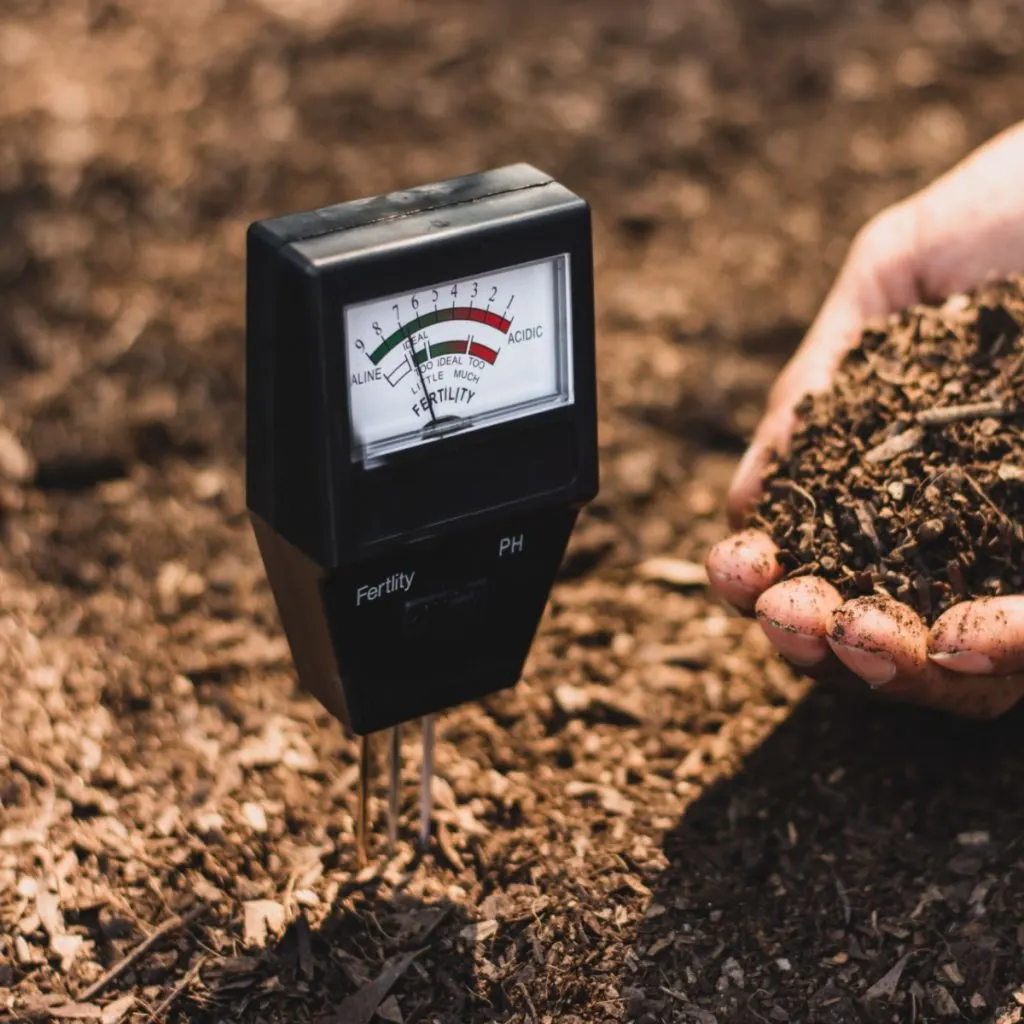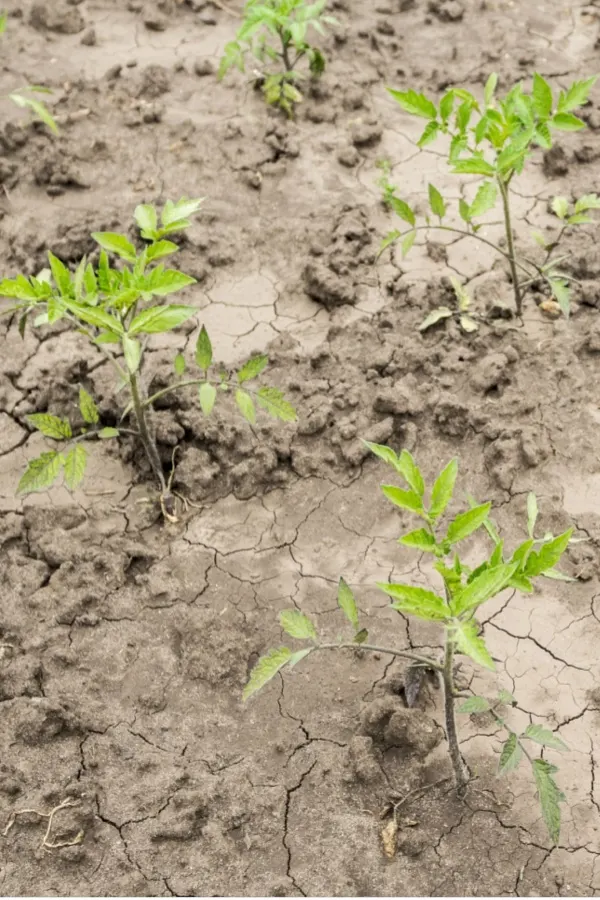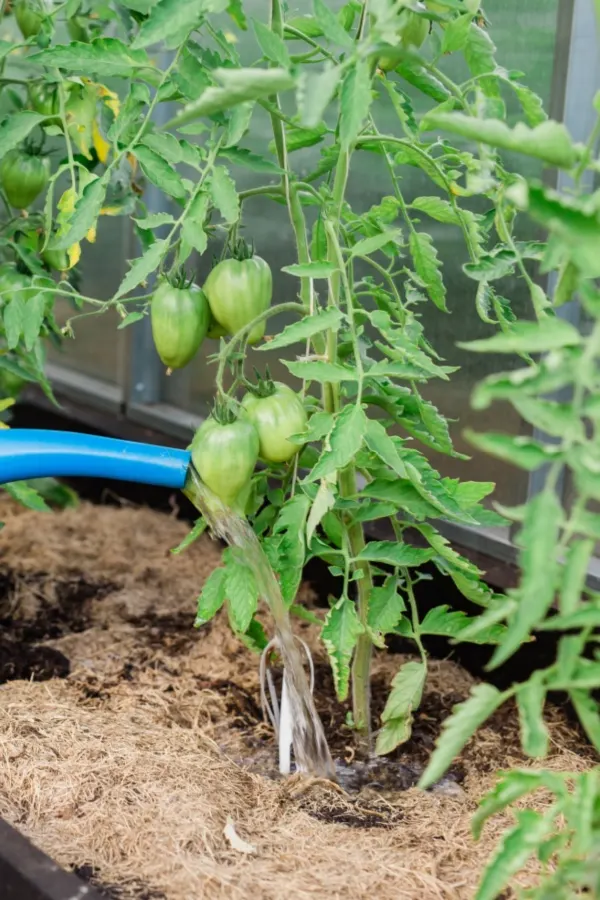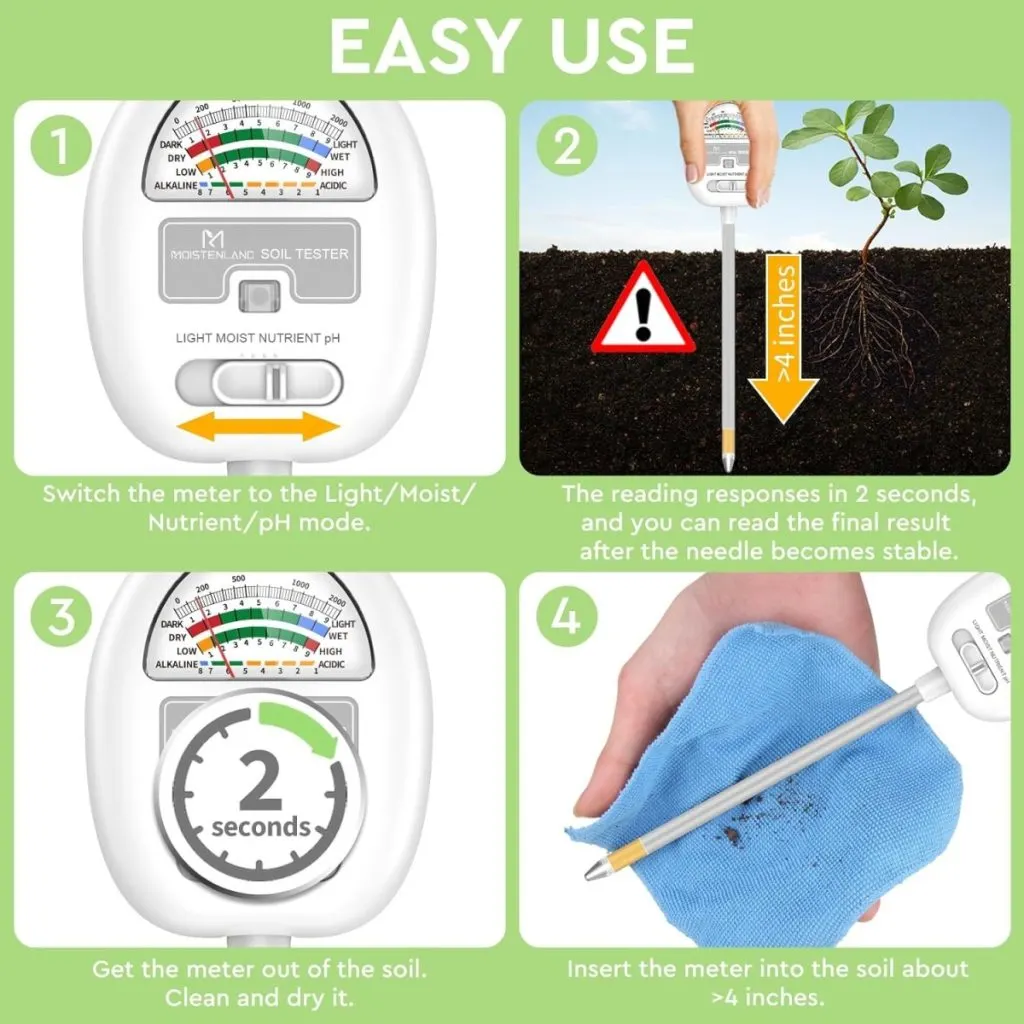When it comes to determining the best time to water your tomato plants, it doesn’t get any easier or more accurate than using a simple and inexpensive moisture meter.
While providing tomato plants with adequate water may seem straightforward, there are quite a few issues that can occur if they don’t receive the correct amount. And those problems can lead to unhealthy plants, a smaller harvest – and in many cases, the total demise of your tomato plant!
Unfortunately, when tomato plants struggle to grow, more times than not, it is due to improper watering. If a tomato plant gets too much water, the roots swell. When they do, the roots lose their ability to absorb necessary nutrients from the soil. And if they are sitting in water for an extended period of time, the roots can actually rot.

On the other hand, insufficient water spells trouble for tomato plants as well. Prolonged dryness at the root level leads to shriveling. This also impedes the plant’s ability to absorb essential nutrients from the soil.
So how do you know when to water – or when not to? As you will see below – this is exactly where a soil moisture meter can save the day!
Knowing When Tomato Plants Need Water
Nearly all vegetable plants will show obvious visible signs that they are in need of water. When a plant droops or the leaves curl around its edges, it’s usually an indication that water may be needed.
In addition, there are also signs that too much water might be an issue. If the leaves of the tomato plant begin to turn yellow, it’s often an indication that the roots have too much water surrounding them. However, it could also be a sign that the plant is lacking sun or soil nutrients as well.
When it comes to watering, the first instinct of many gardeners is to visually inspect the top of the soil. But unfortunately, you can’t gauge an accurate moisture at the root level simply by how the soil appears on the surface.
Even if the soil looks dry and cracked there can often be enough or even too much moisture at the root level. And if you choose to water, it can saturate the roots. Likewise, if the surface appears moist, the moisture may not be going all the way to the roots.

Therefore, the only way to know what is really happening at the root level is to check the moisture beneath the soil – and the easiest and most reliable method for that is to use a moisture meter.
Check The Soil Moisture
Although you can attempt to check the moisture levels by using your finger or a wooden skewer, the results are somewhat subjective. Does the soil feel moist, but not too wet? Is there dirt sticking to the wooden stick because of how I pulled it out of the ground or is truly dry?
Although these two methods may give you a general idea of what is going on, they definitely will not provide 100% accurate results. However, when you use a moisture meter it takes all the guesswork out of when you need to water your tomato plants. Not only do they provide you with accurate results, they are simple and easy to use!
A soil moisture meter is a simple gardening tool that resembles a food thermometer. Most meters have one or two long metal probes that go into the ground – and at the top is a gauge which will display the percentage of moisture in the soil.
Most models do not even require batteries and provide results within seconds. Some moisture meters even come with additional features that many gardeners find beneficial. In addition to measuring soil moisture, many also test the soil’s pH levels and temperature too.
How Often To Test The Soil Moisture
As to how often you should test the soil moisture, it will vary on a couple of factors. Most importantly – the age of the tomato plant and your growing environment. For instance, young tomato transplants will need less, but more frequent water. They have shallow roots that are not yet deep in the ground to search for available water under the soil.
However, it is important to avoid overwatering them as they get established in the ground. If you continually provide water from the surface their roots will delay their growth downward in the search for moisture. This is where a soil moisture meter is vital in helping you to determine when to water your tomato plants.

On the other hand, when large tomato plants begin to flower and produce fruit, they will require more water. But that water has to go deep in order to hydrate a bigger root system.
How To Use A Soil Moisture Meter
No matter what brand of moisture meter that you purchase, using it is simple and easy. Most meters come with probes you push into the soil to a depth of 3 to 4 inches.
Place the probe a few inches away from the stem of the plant. This will help to keep from damaging any newly developing roots right near the plant’s base. If you can’t easily place it in soil, pick another nearby location.
Let the meter sit in the soil for 2-3 seconds. Although the gauge will be different depending on the model you choose, most will have some sort of scale or chart that will immediately indicate the moisture level of the soil.
It is best to test the soil near multiple plants as drainage may vary even in small gardens. However, before testing the next area, be sure to wipe the probe off each time that you change locations. This will help prevent the spread of any soil borne disease.

What To Do With The Results
Keep in mind that even though the results might show low moisture on the scale it doesn’t always mean it’s immediately time to heavily water your tomato plant. For instance, if the weather forecast is calling for a downpour in the next day or two you should only provide a small amount of water, if any at all.
If your tomato plant isn’t showing any visible signs of not having enough water, Mother Nature may provide all that it needs in the coming days. However, if there is no rain in the forecast, it is time to take action.
Remember too if you are using liquid fertilizer or compost tea, that will provide moisture too. See: How To Make Compost Tea – The Perfect Liquid Fertilizer For Tomato Plants!
In general tomato plants need 1-2 inches of water weekly. Although the amount is somewhat hard to monitor, especially trying to determine the amount of water that actually reaches the root level, a moisture meter will take the guesswork out of it. Moisture levels should range somewhere between 40-80% for tomato plants.
One thing is for sure, by simply using a soil moisture meter throughout the season, you will immediately know whether or not your tomato plants need water.
I Grow Tomatoes
Follow Our Facebook Page For Even More Great Tomato Growing Tips! I Grow Tomatoes Facebook Page
I Grow Tomatoes is a website created for those who love all things about tomatoes – from planting and growing – to cooking and canning! We publish two articles every week, 52 weeks a year. Sign up today to follow via email! This article may contain affiliate links.

